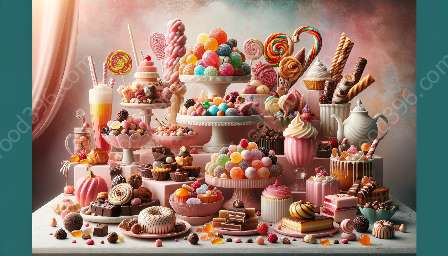Caramel is a beloved confectionery ingredient that brings a rich and indulgent flavor to a wide range of candies and sweets. The process of making caramel involves heating sugar until it reaches the desired color and flavor, leading to the formation of complex compounds that give caramel its characteristic taste and color.
One crucial aspect of creating delectable caramel treats is the use of caramel coloring and additives. Caramel coloring is widely used in the food industry to impart a warm, golden-brown hue to various products, including candies and sweets. Additives, on the other hand, play a pivotal role in enhancing the texture, flavor, and shelf life of confections, ensuring that they maintain their irresistible allure.
The Art of Caramel Creation
Caramel is made by heating sugar to high temperatures, causing it to undergo a series of complex chemical reactions. As the sugar molecules break down and reorganize, they create a wide array of flavorful compounds that give caramel its unique taste and aroma. The gradual browning of the sugar during the caramelization process adds depth and complexity to the flavor profile, resulting in the signature caramel essence that delights the senses.
Furthermore, the addition of cream, butter, or milk to the caramel mixture introduces a rich, creamy consistency that distinguishes caramel from other types of sugar-based confections. This careful balance of sugar, heat, and dairy products is key to achieving the velvety smoothness and luscious mouthfeel that define high-quality caramel candies and sweets.
The Science of Caramel Coloring
While the natural caramelization process imparts a beautiful amber color to caramel, food manufacturers often rely on caramel coloring to achieve consistent and vibrant shades in their products. Caramel coloring is produced through controlled heating of sugars with or without the presence of acids, alkalis, and salts. This careful manipulation of the caramelization process yields a spectrum of colors, ranging from light golden hues to deep, dark browns, offering a versatile palette for enhancing the visual appeal of candies and sweets.
The various types of caramel coloring, such as Class I, II, III, and IV, each possess distinct characteristics that make them suitable for different applications. Class I caramel coloring, for instance, imparts a light yellow to brown color and is commonly used to enhance the appearance of candies, caramels, and other confections. On the other hand, Class IV caramel coloring produces deep, reddish-brown hues that are ideal for creating the intense visual allure of chocolate-flavored sweets and treats.
Additives: The Secret Weapons of Confectionery
In addition to caramel coloring, additives play a vital role in the creation of candy and sweets that captivate the taste buds. These substances are carefully selected for their ability to enhance the sensory experience and improve the overall quality of confections. Emulsifiers, for instance, contribute to the smooth and creamy texture of caramel-filled chocolates and nougats, ensuring a melt-in-your-mouth sensation that elevates the indulgence of these treats.
Furthermore, flavor enhancers and sweeteners help to intensify the lusciousness of caramel candies and sweets, creating an irresistible symphony of tastes on the palate. By carefully balancing the sweetness and richness of the caramel, these additives elevate the sensory delight of each bite, leaving a lasting impression of delectable satisfaction.
Balancing Tradition with Innovation
As the art of confectionery continues to evolve, the fusion of traditional caramel-making techniques with innovative approaches to caramel coloring and additives opens up a world of possibilities for creating novel and enticing candy and sweet creations. Whether it's the timeless allure of classic caramel toffees or the modern sophistication of caramel-flavored macarons and truffles, the judicious use of caramel coloring and additives empowers confectioners to craft confections that delight and surprise consumers with each delectable bite.
By embracing the principles of meticulous craftsmanship and flavor innovation, confectioners can unlock the full potential of caramel coloring and additives, paving the way for a diverse array of tantalizing sweets that cater to the ever-evolving preferences of discerning connoisseurs.
Conclusion: The Sweet Alchemy of Caramel and Additives
In the realm of candy and sweets, caramel coloring and additives serve as essential ingredients that elevate the art of confectionery, infusing each treat with alluring colors, textures, and flavors. Mastering the delicate interplay between the natural allure of caramel and the transformative power of additives allows confectioners to create a symphony of tastes and visual delights that enchant the senses and ignite the imagination.
With an understanding of the magic of caramel coloring and additives, confectioners can embark on a journey of culinary creativity, unveiling an endless spectrum of sweet wonders that captivate the hearts and palates of confectionery enthusiasts around the world.

